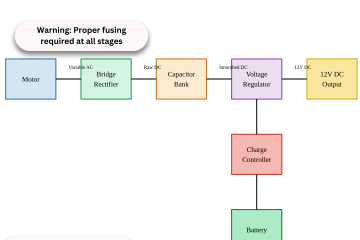
DIY Faraday Cage Instructions
Have you ever worried about the potential damage that electromagnetic pulses (EMPs) or radio frequency interference (RFI) can do to your sensitive electronic devices? Silly me for asking that question because my inbox tells me the answer. YES! You have. Or maybe you’re just curious about how to protect your gadgets from any form of electronic eavesdropping? Either way, making a small DIY Faraday cage is a practical and fun project that can give you peace of mind. Let’s dive into this step-by-step guide to crafting your very own Faraday cage.
What is a Faraday Cage?
A Faraday cage is an enclosure made of conductive material that blocks external electric fields and electromagnetic waves. Named after the scientist Michael Faraday, this ingenious invention can shield its contents from electromagnetic radiation. It’s used in various applications, from protecting sensitive equipment to securing communication devices.
Materials You’ll Need:
- A metal container: A metal trash can, ammo box, or even an old metal filing cabinet will work.

DIY Faraday Cage
- Aluminum foil: Heavy-duty aluminum foil for extra shielding.
- Conductive adhesive tape: To ensure good electrical connections.
- Rubber or foam insulation: To prevent your devices from touching the metal surfaces.
- A plastic or cardboard box: Slightly smaller than your metal container, to place inside as an inner lining.
- Duct Tape: for ensuring the seals stay put
Step-by-Step Instructions for DIY Faraday Cage
Step 1: Prepare the Metal Container
Choose your metal container based on the size of the items you want to protect. Ensure the container is in good condition, with no holes or rust, as these can compromise the cage’s effectiveness. (tune in to our next blog that will tell you what makes a good metal container)
Step 2: Line the Interior
Line the inside of your metal container with rubber or foam insulation. This step is crucial to prevent your electronic devices from directly touching the metal, which could potentially damage them.
Step 3: Wrap the Inner Box
Take your plastic or cardboard box and wrap it completely in heavy-duty aluminum foil. Ensure there are no gaps or tears in the foil. This box will serve as an additional layer of shielding inside the metal container.
Step 4: Place the Inner Box Inside the Metal Container
Place your foil-wrapped box inside the insulated metal container. Make sure it fits snugly without forcing it, which could tear the foil or damage the insulation.
Step 5: Seal the Container
Use the conductive adhesive tape to seal the lid of the metal container tightly. This ensures there are no gaps through which electromagnetic waves could enter. Make sure the tape creates a good electrical connection between the lid and the body of the container.
Step 6: Test Your Faraday Cage
To test the effectiveness of your Faraday cage, place a small battery-operated radio or a cell phone inside. Close the lid and seal it with tape. If the device stops receiving signals or loses connectivity, your Faraday cage is working!

double wrap a cell phone before putting it in the faraday cage
Tips and Tricks for DIY Faraday Cage
- Double Wrapping: For extra protection, consider double wrapping your devices in aluminum foil before placing them in the inner box.
- Regular Checks: Periodically check the condition of your Faraday cage, ensuring there are no new holes, rust spots, or wear that could reduce its effectiveness.
- Versatility: Use different sizes of metal containers for various devices, from small tins for USB drives to larger boxes for laptops and tablets.
Practical Uses for a Personal Faraday Cage
- Protecting Sensitive Electronics: Keep your backup drives, smartphones, and other sensitive electronics safe from EMPs or solar flares.
- Privacy and Security: Store devices like phones and key fobs to prevent remote hacking or tracking.
- Emergency Preparedness: Include a small Faraday cage in your emergency kit to safeguard communication devices during a disaster.
Creating your own small Faraday cage is a straightforward project that can provide significant benefits in protecting your electronics. With just a few materials and a bit of time, you can ensure your devices are safe from electromagnetic interference and potential electronic threats. Yes, there is the consideration that some items, such as a mobile device, won’t work in an EMP scenario, but you never know when systems will be restored, so having the ability to use a mobile device rather than it being destroyed is still a wise idea. Sleep well.
Tune in to tomorrow’s post in which I share with you what are some ideas for metal containers for a DIY Faraday Cage. It won’t include some of the obvious things that people are always mentioning.


